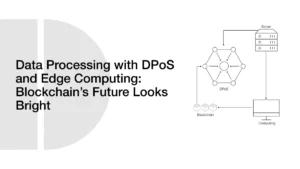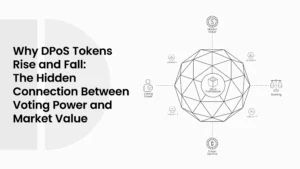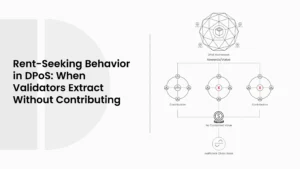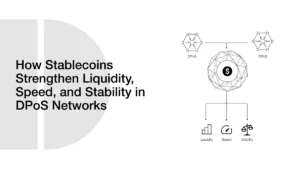Proof of Work vs Delegated Proof of Stake: How DPoS Consensus Differs from PoW
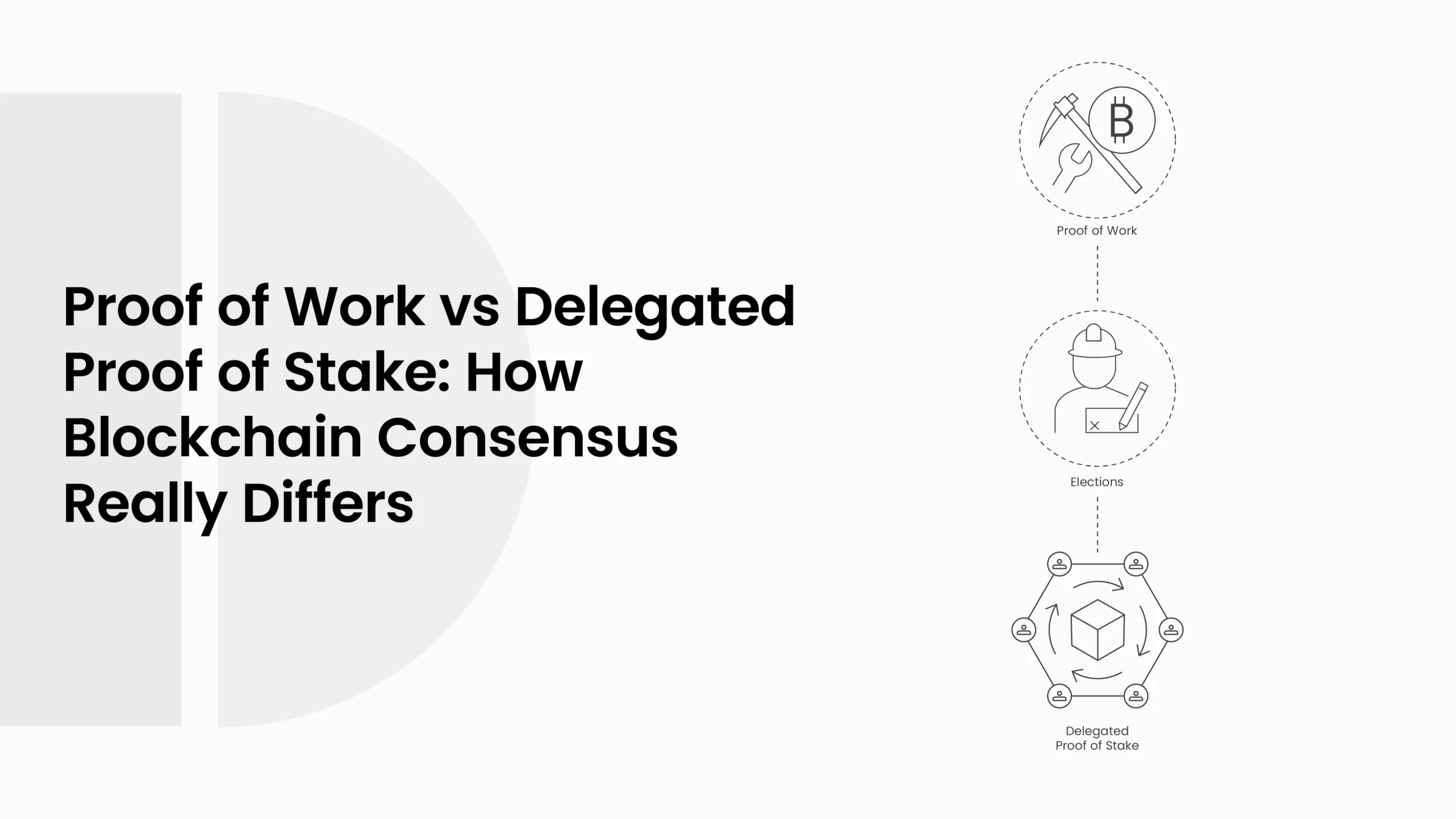
The way blockchains reach consensus has become one of the biggest research areas in technology and computer science in recent years. Everywhere, developers and companies are striving to discover more efficient, quicker, and more environmentally friendly methods of maintaining a decentralized system in a smooth operation. Two of the most discussed approaches are Proof of Work (PoW) and Delegated Proof of Stake (DPoS).
- Starting with the Fundamentals: What Consensus Means
- Proof of Work: The Original Model
- How Mining Supports the Network
- The Cost of Security
- Delegated Proof of Stake: A Faster and Lighter Way
- How Voting Changes the System
- Balancing Speed and Decentralization
- Comparing Participation and Influence
- Who Gets to Validate?
- Network Speed and Throughput
- Security and Attack Risks: What Keeps Each System Safe?
- Long-Term Sustainability and Maintenance: Costs and Incentives Over Time
- Conclusion
- Frequently Asked Questions About PoW vs DPoS
- What is the main difference between PoW and DPoS?
- Which is faster: PoW or DPoS?
- Why is PoW criticized for energy use?
- Is DPoS more centralized than PoW?
- Which consensus is safer against attacks?
- Glossary of Key Terms
The two systems assist blockchains in determining which transactions qualify as genuine and who is qualified to certify them. Proof of Work continues to be the primary system for older networks, such as Bitcoin, while more contemporary systems, like EOS and TRON, employ DPoS to achieve faster speeds and consume less energy. This blog examines the functionality and differences between the two systems and their potential long-term ramifications.
Starting with the Fundamentals: What Consensus Means
It is what makes blockchain honest; in any blockchain, all nodes need to have a common version of the data. This contract is referred to as a consensus and ensures that no one can counterfeit transactions or use the same money twice. This is because transactions are verified and validated by special systems, and there is no single individual or firm in charge.
Popular forms of that are Proof of Work and Delegated Proof of Stake. All of them are performed in their own way to make the system fair and safe. Having an understanding of how they arrive at the consensus can make it possible to understand why they vary in speed, cost, and trust.
Proof of Work: The Original Model
How Mining Supports the Network
PoW was first used in Bitcoin when it was created. It works by asking miners, also known as validators, to solve complex mathematical puzzles using their computers. The miner who manages to solve the puzzle adds the following new block of transactions into the blockchain and receives the payment in new coins. This concept is not complex yet powerful, and numerous professionals have researched it over the years due to its ability to make Bitcoin highly secure.
The entire system is driven by both reward and work. Money is spent by miners on machines and electricity as they desire to get new coins. When they attempt to cheat, they risk losing all the money they have invested. A study by Gervais and others in 2016 found that this system makes it very difficult and costly for anyone to attack the network, thereby keeping it safe.
ALSO READ: 8 Reasons a Validator Loses Your Vote in a DPoS System
The Cost of Security
Although PoW is effective in preventing fraud and malicious individuals, it is very power-consuming. Mining consumes vast amounts of energy, which has led to concerns about environmental impact. In a 2021 report, Cambridge reported that Bitcoin alone consumes nearly the same amount of energy as a small country.
Due to this issue, developers began to seek alternative means of running blockchains that consume less power. Delegated Proof of Stake (DPoS) is one of the new methods they have developed. It was designed to be quicker and consume significantly less energy than mining.
Delegated Proof of Stake: A Faster and Lighter Way
Delegated Proof of Stake (DPoS) works in a very different way from mining. Instead of everyone trying to solve complex puzzles like in PoW, only a select few are chosen to do the job. These individuals are referred to as validators or block producers. Token holders vote for them, and the top candidates are selected to create and verify new blocks.
This system requires fewer personnel for validation, allowing it to run faster and consume significantly less energy. A 2022 study by Li and Palanisamy found that DPoS is more suitable for systems that process a large number of small, high-frequency transactions. It’s faster, cheaper, and more scalable than the old mining setup used in PoW.
How Voting Changes the System
In DPoS, people who hold tokens don’t just sit and watch; they actually help run the network by voting. When validators do a good job, voters keep them. However, if they cheat or go offline, voters can remove them and select new ones. That way, everyone has some power to keep the system fair.
Still, it’s not perfect. In some DPoS blockchains, a few large holders end up with the majority of the voting power. That can make the system less fair and more centralized. A 2022 paper by Zhang and Zhou even showed that, in many cases, only a few entities control the majority of the votes.
Balancing Speed and Decentralization
This is the biggest debate around DPoS. It’s super fast and saves energy, but it sometimes gives too much control to a small group. That’s why experts consistently say DPoS is a blend of efficiency and trust; it works well when voters remain active, but it can become too centralized when they don’t.
Comparing Participation and Influence
Who Gets to Validate?
In PoW, validation is open to anyone with the necessary hardware and computing power. Participation is based on computing power, so the more resources someone has, the more likely they are to earn rewards. This, however, poses a high entry barrier as well, and small users find it hard to compete.
DPoS reduces this obstacle by enabling customers to delegate their tokens. Smallholders can also have voting power by voting for a validator. This system provides users with more control over how the network is operated, but it also relies heavily on voter turnout and the transparency of the validators.
ALSO READ: All You Need to Know About DPoS Node Requirements
Network Speed and Throughput
The other major difference is speed. DPoS networks also have lower validator sets and shorter block times, which allow them to handle hundreds or even thousands of transactions per second. In comparison, PoW systems are slower due to the time required to complete puzzles, as well as to transmit blocks over the network.
DPoS is a popular choice for running applications like games, social platforms, and micropayments because it is faster to produce blocks. However, speed cannot be talked about separately. It must be fair and equal, open and non-compromising.
Security and Attack Risks: What Keeps Each System Safe?
PoW is based on the economic mining cost to maintain the network’s security. Any attack on the network would involve massive expenditure on equipment and power. With this design, successful attacks will be very unlikely, particularly on large and established networks.
In its place, DPoS employs social and governance tools. In the event of bad conduct among validators, voters can dismiss them, and some systems may even impose penalties, such as slashing. However, these protections depend on voter participation and honest reporting. If large token holders form alliances or act in self-interest, the system may become less secure over time.
Long-Term Sustainability and Maintenance: Costs and Incentives Over Time
Over the long term, PoW systems must strike a balance between miner rewards and environmental concerns. As block rewards decrease, networks may need to rely more heavily on transaction fees, potentially altering their economic structure. Using such tools, this shift has been mentioned as the issue of network security maintenance becomes more difficult due to the decrease in rewards.
DPoS is not costly in terms of energy, and its viability is determined by voter participation and confidence in the conduct of the validators. If delegators cease to participate, or if too much power is concentrated in the validators, the system can fail to be fair and responsive.
ALSO READ: Can DPoS Be Hacked? Your Ultimate Guide to Risks and Security
Conclusion
PoW and Delegated Proof of Stake follow extremely different routes towards consensus. PoW employs open participation and computation to secure the network, whereas DPoS utilizes a small pool of elected validators to produce blocks more efficiently and with reduced energy consumption.
The decision between them lies in the project’s aim. PoW can be appropriate in systems that appreciate decentralization and high security, whereas DPoS is more suitable in systems that require high speed and active governance. Each model presents trade-offs that must be carefully weighed.
Frequently Asked Questions About PoW vs DPoS
What is the main difference between PoW and DPoS?
PoW relies on miners solving puzzles to validate transactions, while DPoS uses elected validators chosen by token holders to produce blocks.
Which is faster: PoW or DPoS?
DPoS is faster. It utilizes a small validator set, which enables quick block confirmation, whereas PoW requires more time due to mining difficulty and block propagation.
Why is PoW criticized for energy use?
PoW miners need massive computational power, consuming large amounts of electricity to secure the network, often compared to the energy use of small countries.
Is DPoS more centralized than PoW?
It can be. DPoS relies on a limited number of elected validators, which may lead to power concentration if only a few token holders control the majority of the votes.
Which consensus is safer against attacks?
PoW offers stronger protection against direct attacks because of the high cost of mining hardware and electricity. DPoS relies more on governance and community action for security.
Glossary of Key Terms
Blockchain Consensus Mechanism:
A method used by distributed networks to agree on the validity of transactions and the state of the ledger.
Proof of Work (PoW):
A consensus algorithm where miners use computing power to solve puzzles and validate blocks, earning rewards in return.
Delegated Proof of Stake (DPoS):
A governance-based consensus where token holders vote for a small number of validators who produce blocks on behalf of the community.
Validator:
A network participant elected or chosen to create new blocks and confirm transactions.
Mining:
The process of solving cryptographic puzzles to add new blocks in a PoW network.
Staking:
Locking tokens to participate in consensus or to vote for validators in PoS or DPoS systems.
Throughput:
The number of transactions a blockchain can process per second.
Governance:
The decision-making process that determines how a blockchain’s rules and upgrades are managed.

